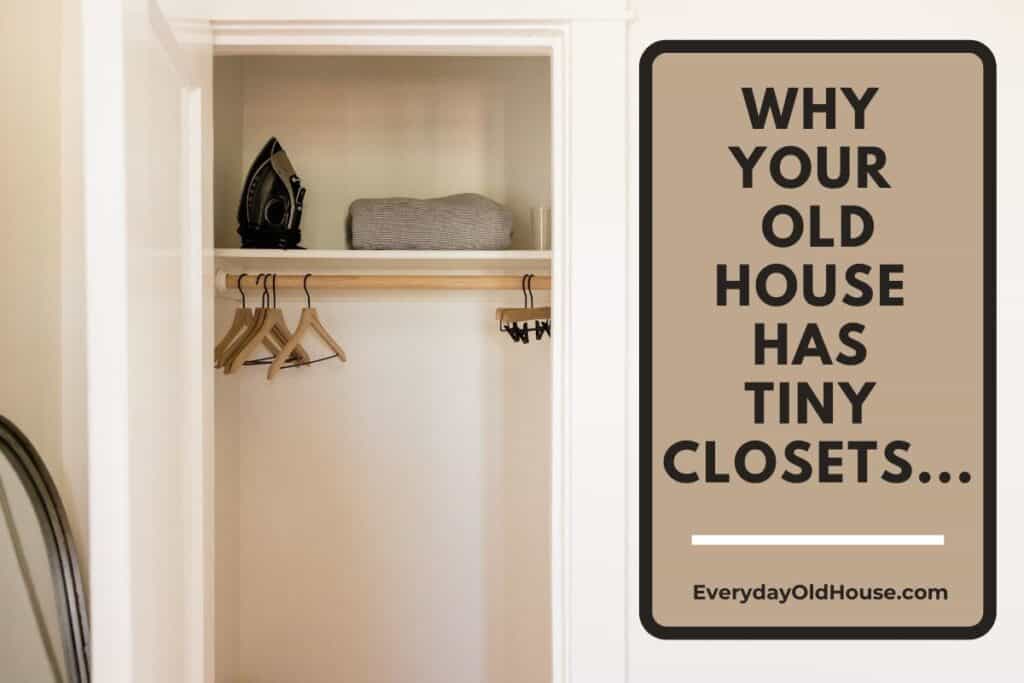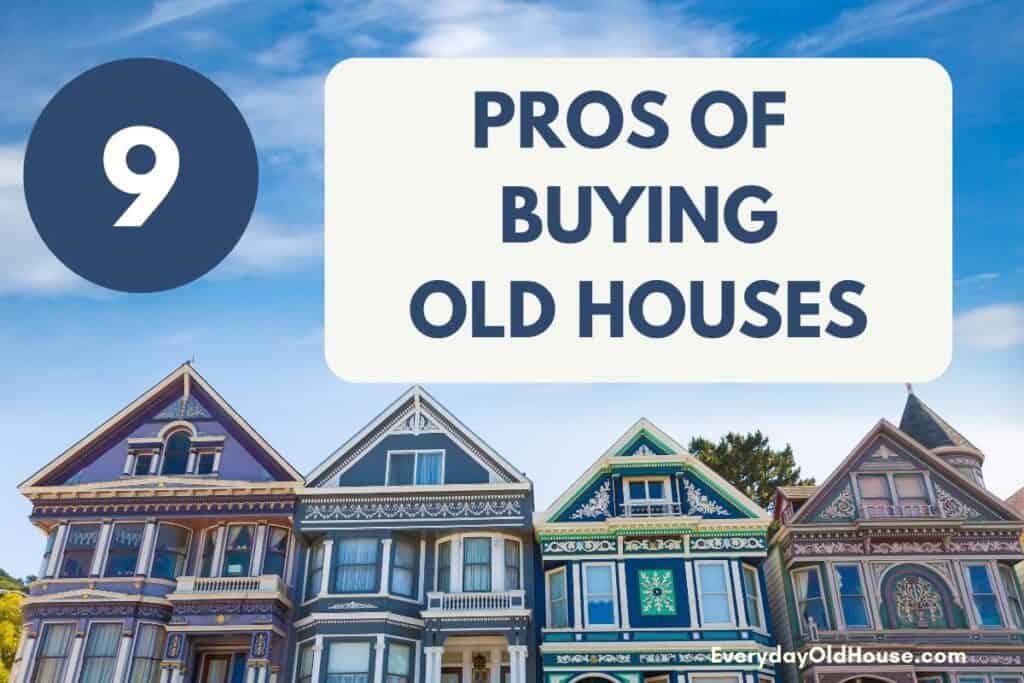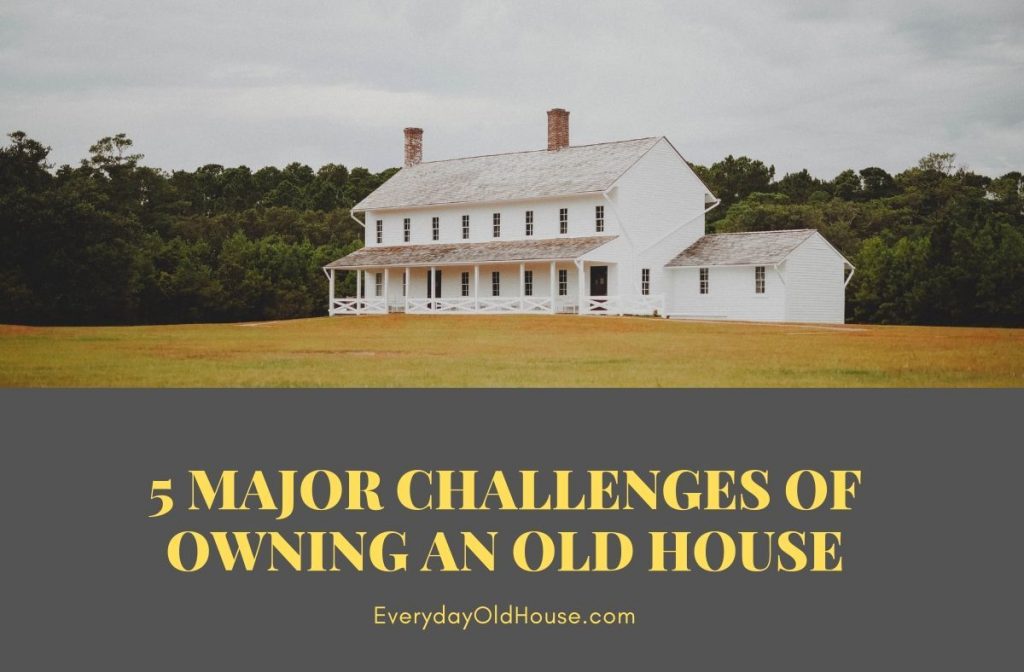Old houses posses a distinctive character and unique charm that few newer built homes can match. While there are abundant pros of buying a old house, there are several reasons why buying an old house might not be the right choice for you. Here’s 11 disadvantages of buying an old house to consider.
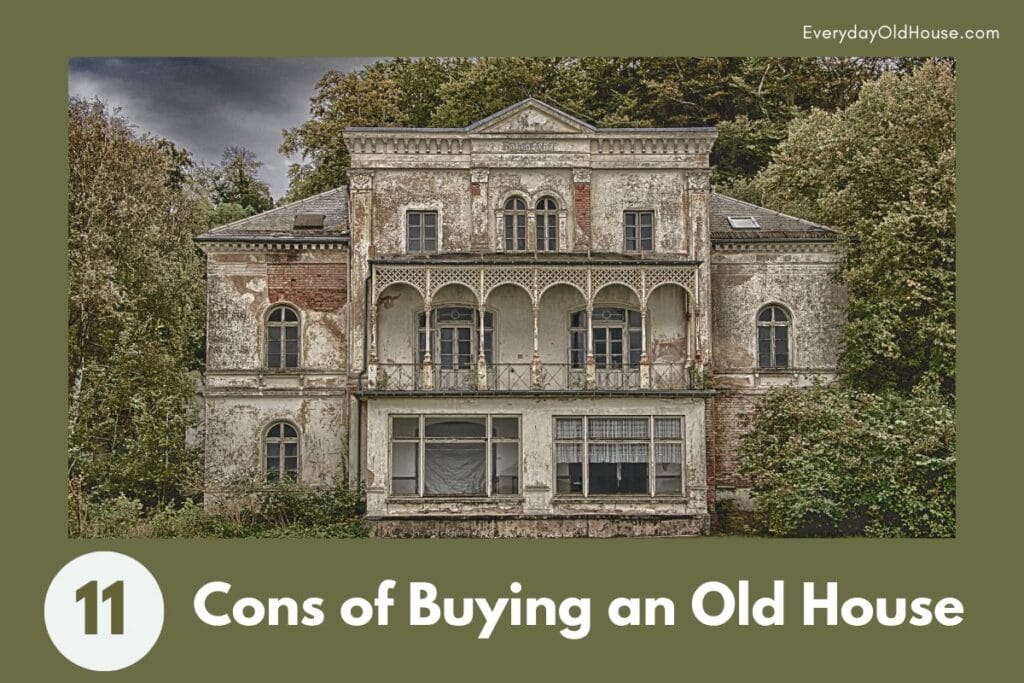
11 Disadvantages of Buying an Old House
Some home buyers can see beauty and potential in old houses, while others view it as an eyesore. Regardless of your perspective, old bouses present problems that owners of newer homes simply don’t need to deal with.
Take a look at the 11 disadvantages of buying an old house that might steer you towards the option of seeking a newer home.
1. Square Footage
While the average older house is located on a larger sized lot, the average old house has significantly less square footage than modern homes.
At the beginning of the 1920s, the average home was about 1,000 square feet. In 2010, the average size home was over twice the size, with an average 2,300 square feet. That’s significant, right?
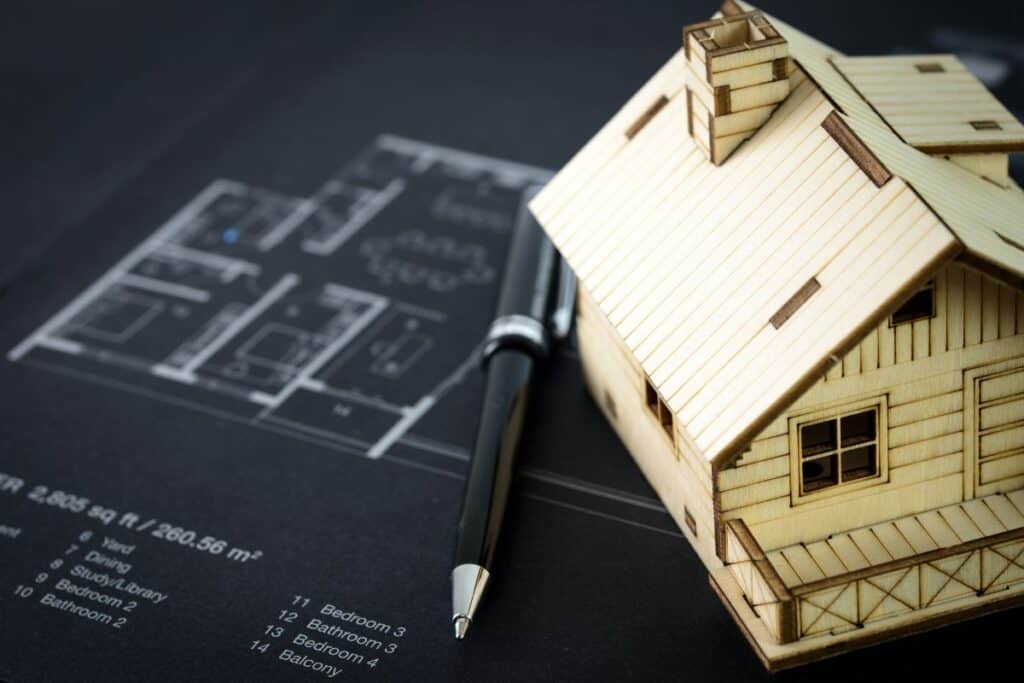
While there are obvious variations (think large, rambling Victorian), on average buying an old house will mean a smaller home.
2. Lack of Storage
This con of buying an old house personally hits me right in the heart. The lack of closet space in our old house presents a daily challenge to my modern family.
But back in the day, homeowners didn’t need as much closet space as we do now. They didn’t own nearly as much physical possessions. There were no electric mixers, coffee makers, toasters, etc to take up space in kitchen cabinets. People didn’t accumulate as many clothes. There was no “need” for 15 different pairs of paints – boot-leg, capri, and cargo (ok, I’m showing my age with cargo pants… ?). Heck, hangars weren’t invented until the mid-1800s!
3. Smaller Rooms
The “open floor” concept admired and promoted by HGTV is not a design that you will find in older houses. Older homes feature smaller, separate spaces for a few reasons.
First is the result of simpler architectural house framing, which relied on a greater number of load bearing walls. And if you are looking to perform a major renovation, these load bearing walls may either prevent those renovations, or add significant cost.
Second, older homes were designed with smaller rooms tailored to different activities. For example, upper-end Victorian homes commonly have separate rooms with foyers, parlors, and libraries. But in newer build, these rooms are combined into one larger multi-use room.
Segmented rooms in older homes present several modern day challenges (I’ve dive into those challenges in a future post). But one I feel the need to immediately point out is the difficulty in finding enough space for large furniture and electronics.
When old houses were built, architects and developers didn’t have to consider large sofa sectionals nor widescreen tvs. And bedrooms contained twins and doble beds. They didn’t have to accommodate queen- or king -sized beds. The first king-sized bed didn’t appear until around 1890!
4. Less Energy-Efficient
Unfortunately, old houses are typically much less energy-efficient than new homes. Many lack sufficient insulation and have drafty windows and doors.
In fact, older homes are reported to need about 20% more energy to heat versus new houses.
And this lack of energy-efficiency can translate into a less comfortable home or more money leaving your wallet. The U.S. Census Bureau’s American Housing Survey estimates that homeowners in old homes spend 17% more on electricity and 38% more on gas per year.
But that doesn’t mean you can’t retrofit your home. Add insulation to better retain heat or air depending on the season. Renovate or replace drafty windows.
Unfortunately for homeowners of old houses it equates to more time, effort and money.
5. Hazardous Materials
Industry has come a long way in improving the health and safety of our homes and communities. And that includes discovering that some building materials, such as asbestos and lead-based paint, triggered significant health threats.
As further discussed in 7 Environmental Dangers of Old Houses, homeowners need to be able to identify and understand how these hazards impact their home.
What’s important to remember is that the mere presence of many of these environmental hazards is not hazardous onto itself. For example, asbestos. As long as the asbestos is encapsulated and not present in the air, there is low risk of exposure (and sickness) to a home’s occupants. However, any renovations that might disturb asbestos needs to be carefully handled by trained professionals.
6. More Home Maintenance
One of the obvious disadvantages of buying an old house is the MUCH higher level of home maintenance. New homes have shiny-new roofs, appliances, HVAC systems, etc. They won’t (hopefully) break for a long time. But in an old house (even a well-maintained one), some components may be newly replaced, while some might be on their last legs.
In an old house, there is always something to repair. There is no shortage of projects that run the gamut in cost and time. And it will test your patience.
In other words, if you like spending your weekends lounging on a beach or hiking up on the mountains, an old house might not be for you. If you are impatient and don’t want to work with your hands, then an old house is probably not for you.
Why? Because you will be spending time working on your house….
It might be a short, inexpensive DIY fix like filling the cracks on an exterior door. Or a medium sized cost of replacing appliances that reached the end of their lifespans.
Or it may involve major repair or replacement of major building components like a new roof. And these projects don’t come cheap, especially if you have outdated heating, electrical, or plumbing systems that do not comply with modern building codes.
7. Structural or Foundational Problems
Your foundation serves as the basis for stability of your entire home. Being in good working condition is crucial. If it becomes damaged or unstable, issues spread and impact the rest of the house. Think sinking floors, jammed doors and windows, cracked walls, etc…..
While a foundation can last hundreds of years (even with special care and regular maintenance) like all other building components, there is eventually wear and tear that can results in damage.
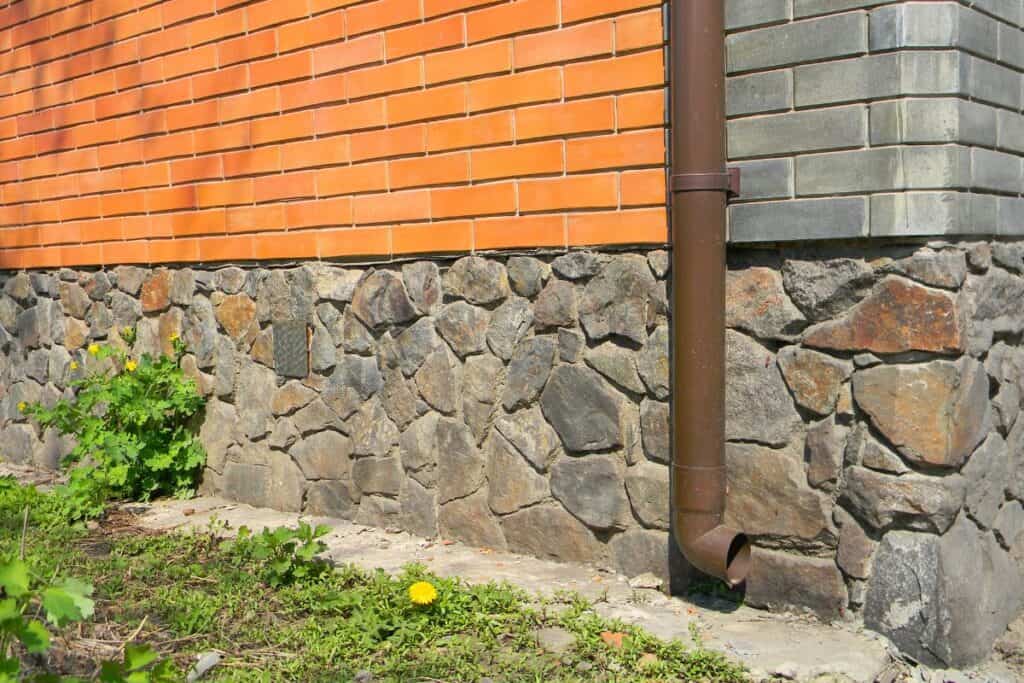
Fixing a damaged foundation (and the domino effect of other damage throughout the house) can be incredibly complicated and expensive to fix. In fact, according to several surveys, it is the Number 1 most expensive home repair, running as high as almost $31,000!!!
8. Expensive (or No) Insurance
Obtaining insuring an old home can be more difficult and expensive than for a newer home. On average, insurance premiums for a home over 30 years old are 75% higher than for a brand-new home. Yikes!

Why is insurance for an older house so much more expensive? A variety of reasons, such as:
- Decay: Decades of wear and tear and exposure to the elements make older homes more prone to additional damage.
- Materials and Design: Insurance claims costs to rebuild or repair older home using original or similar materials, such as solid doors and plaster walls are more expensive than using today’s cheaper materials. And if hazardous materials are involved, then it’s even more money to remove and abate.
And in some cases, worse than high premiums is some homeowners of old houses can’t even get insurance coverage! Many insurance carriers won’t cover true fixer-uppers (i.e. homes that need extensive renovations before being inhabitable). Or insure homes with outdated electrical systems like knob and tube.
9. Costs After Buying
While a pro of buying an old house is the likelihood of a lower purchase price, the money you save on monthly mortgage payments will likely be reinvested back into the home.
And if you haven’t noticed by now, several of the disadvantages of buying an old house discussed above require a significant amount of cash:
- System updates
- Renovations
- Utility Bills
- Insurance
Oh, and I didn’t even mention the emergencies that will happen, like a burst water pipe at 2am on a frigid January night (yup, speaking from experience).
So, let me be clear. Do not spend any savings made on the purchase price of an old house towards overpriced new furniture or a vacation to celebrate becoming a homeowner. You will likely need to fund a host of home projects after you have moved in. In fact, you might actually need even more money that what you saved…..
10. Insects and Pests
Unfortunately, a common con of buying an old house is not being the only occupant of your home. Especially if that old house has been empty or abandoned. Insects such as wasps, ants, cockroaches, termites, and pests (ex: rodents like mice, rats, moles, and raccoons) will happily take shelter in an old house.
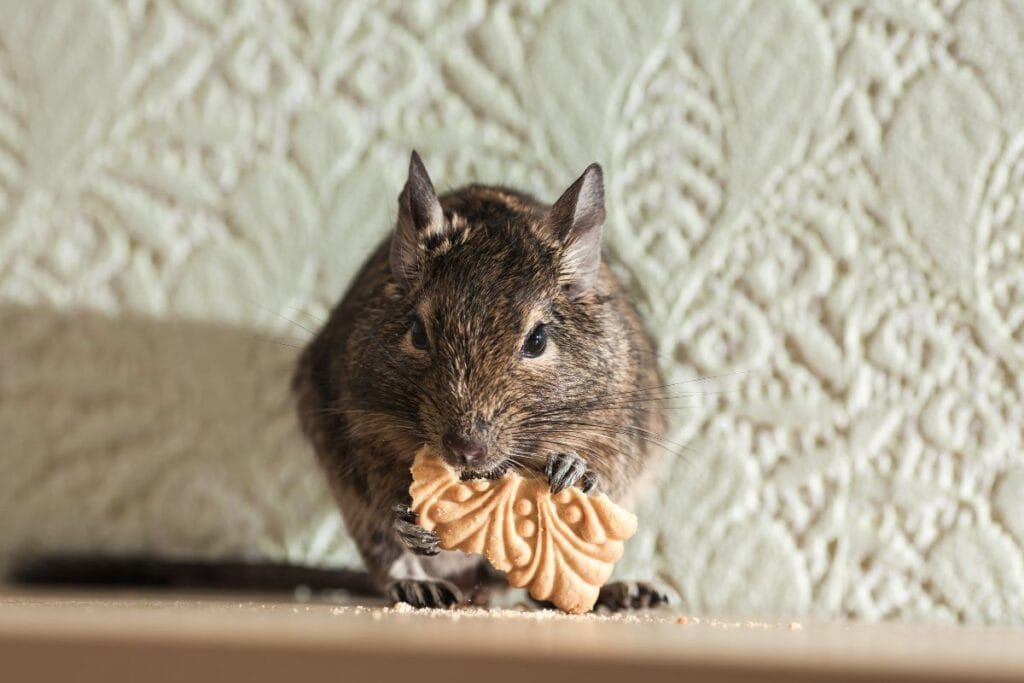
Some pests are easy to find and remove, while others hide inside walls and cavities that take more effort and the experience of a professional to remove. Some pests merely nest inside to seek shelter from the elements, while others like termites cause considerable damage to your home.
Once removed, you need to understand how these pests even got inside the house, and then take steps to block that entrance. When we moved into our old house, we found a rodent living in our basement. We found the entrance (hole in basement door). We replaced the door and set out poison (I know, I know… don’t send me nasty comments). Knock on wood, we haven’t had a problem since.
11. Meandering Roots
Who doesn’t love lounging under a big, shady maple or oak tree on a hot sunny summer day? But unfortunately that can come at a price.
Those same large trees often have big, strong roots underground that grow toward house foundations and pipes and can cause significant damage. Ask my neighbors, who had a burst sewer pipe from a large tree root.

12. Not Customizable
When you buy an existing house, it comes as-is. There’s a set floor plan with existing walls, built-ins, and fixtures. Sure, you can renovate, but that takes time, money and effort.
However if you pair up with a new home development, you are literally on the ground floor on the design. You are given the opportunity for a blank slate to design your ideal living space – from floor plans to architectural features, to interior detail elements.
Wrapping It Up
Buying an old house has both risks and rewards. Before you jump into your search for your next “home sweet home”, be sure to understand and weight the benefits AND disadvantages of buying an old house.
Related Posts
Want to be the first to know about new posts? Be sure to follow me on Pinterest, Facebook, Instagram or Twitter of even Etsy! Or better yet… Subscribe below!
My monthly (admittedly sometimes more, sometimes less….) emails are like receiving a unexpected letter from an old friend WITHOUT needing to put on your slippers and walk out to your mailbox…. See? I got ya, my friend!)
[Note: My posts are proudly connected to these amazing link parties full of DIY ideas and inspiration!]
